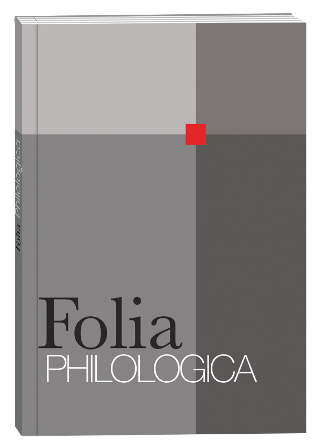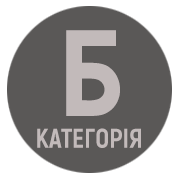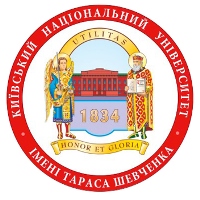NEGATIVE IMAGE OF POLES IN CORPUS OF THE MODERN LITHUANIAN LANGUAGE
DOI:
https://doi.org/10.17721/folia.philologica/2021/2/1Keywords:
noun Polish, traits of Polish, fragment of the concept of Polish / PoleAbstract
The article considers the negative assessment of the word Pole in the language consciousness of Lithuanian speakers. The negative image of Poles in the presented data material of the research, which was served by journalistic texts from the corpus of modern Lithuanian language, is highlighted. 148 sentences with negative statements about Poles were analysed. It allowed to identify some negative features of Polish linguistic culture formed in the language consciousness of Lithuanians, caused by historical, political and competitive contexts. The structural approach to meaning in the article is combined with cognitive one, which involved the use of appropriate methods of analysis – from the meaning of the word to the meaning of the sentence. The purpose of the article is to highlight the negative image of the Pole in the language consciousness of Lithuanians, recorded in the word forms of the noun Pole(s) in Lithuanian journalistic texts. Scientific novelty. Analysis of stereotypes in linguistics is relevant and always on time, because they affect all areas of human activity. To study the stereotypes associated with the negative image of Poles in the language consciousness of Lithuanians, the methods of lists of characteristics, sociological methods, and surveys were used. However, the relevant tools are usually associated with stereotypical thinking of respondents, which determines the need to refer to the texts and corpus to obtain unbiased judgments and correct generalizations. In addition, the image of the Pole in modern Lithuanianlanguage discourse has not yet been the subject of special linguistic research. Conclusions. As a result of the analysis, it was established that the current attitude of Lithuanians towards Poles still depends on historical and political factors. Based on the corpus of texts of the modern Lithuanian language, it can be argued that in the past Poles were occupiers and enemies of Lithuanians, inflicted much damage on Lithuanians: attacked, killed, executed, persecuted, deported, tried to Polonize Lithuania, stop educational and cultural processes. The analysis of the data material showed the following heterostereotypes of Lithuanians: Poles think well of themselves, they are angry, hooligans, contemptuous, insidious, love profit, compete with Lithuanians.
References
Anglickienė L. (2006). Kitataučių įvaizdis lietuvių folklore. Vilnius: Versus aureus. [in Lithuanian].
Auškalnienė L. (2006). Etninis nepakantumas Lietuvos internetinėje žiniasklaidoje: komentarai internete. Etniškumo studijos. Nr. 1. P. 45–57. [in Lithuanian].
Beresnevičiūtė V. Nausėdienė I. (1999). Trys Lietuvos dienraščiai („Lietuvos rytas“, „Respublika“, „Lietuvos aidas“) apie tautines mažumas Lietuvoje. Sociologija. Mintis ir veiksmas. 1999. Nr. 3(1). P. 67–78. Prieiga internete: https://www.zurnalai.vu.lt/sociologija-mintis-ir-veiksmas/article/view/6847/4749. [in Lithuanian].
Cidzikaitė D. (2007). Kitas lietuvių prozoje. Vilnius: Lietuvių literatūros ir tautosakos institutas. [in Lithuanian].
Čižik-Prokaševa V. (2020). Lenkė Dabartinės lietuvių kalbos tekstyne. Lietuvių kalba. Nr. 14. P. 1–12. Prieiga internete: https://www.zurnalai.vu.lt/lietuviu-kalba/article/view/22459/21721 [in Lithuanian].
Čižik-Prokaševa V. (2021). Lenkai Dabartinės lietuvių kalbos tekstyne. Mano kraštas. 2021 m. gruodžio 14 d. Prieiga internete: https://www.manokrastas.lt/straipsnis/lenkai-dabartines-lietuviu-kalbos-tekstyne [in Lithuanian].
Firth J. R. (1935). The Technique of Semantics. Transactionsof the Philological Society. Nr. 34. P. 36–73.
Frėjutė-Rakauskienė M. (2009). Etninis nepakantumas Lietuvos spaudoje (Etniškumo studijos 1). Prieiga internete: http://www.ces.lt/wp-content/uploads/2010/03/EtnSt_Frejute-Rakauskiene_2009.pdf [in Lithuanian].
Gudavičius A. (2011). Reikšmė – sąvoka – konceptas ir prasmė. Res Humanitariae. Nr. X. P. 108–119. [in Lithuanian].
Kuzmickaitė L., Tamošiūnaitė R. (2000). Stereotipai kaip socialinė realybė. Etniškumo studijos: teoriniai samprotavimai ir empiriniai tyrimai. Vilnius: Eugrimo leidykla. P. 22–30. [in Lithuanian].
Mikulskas R. (2009). Kognityvinė lingvistika ir leksikografijos problemos. Kalba ir žmonės (sud. A. Judžentis). Vilnius: Vilniaus universiteto leidykla. P. 39–80. [in Lithuanian].
Rutkovska K., Smetonienė I., Smetona M. (2017). Vertybės lietuvio pasaulėvaizdyje. Vilnius: Akademinė leidykla. [in Lithuanian].
Papaurėlytė-Klovienė S. (2010). Kaimyninių tautų atstovai ir jų nacionalinio charakterio specifika lietuvių kalbos pasaulėvaizdyje. Lietuvių kalba. Nr. 4. P. 1–8. Prieiga internete: https://epublications.vu.lt/object/elaba:3448471/[in Lithuanian].
Petrušauskaitė V. (2013). Etninės ir socialinės grupės Lietuvoje: visuomenės nuostatos ir jų kaita 2013 metais. Etniškumo studijos. Nr. 2. P. 180–191. Prieiga internete: http://www.ces.lt/wp-content/uploads/2014/10/2013_2-Etniskumo-studijos.180-191.pdf. [in Lithuanian].
Senvaitytė D. (2004). Etninių stereotipų kaita: tautybės studentų akimis. Tiltai. Nr. 4. P. 123–129. [in Lithuanian].
Šeina V. (2018). Priešas svetimkūnis, kenkėjas: lenko vaizdinys tarpukario lietuvių literatūroje. Naujasis Židinys-Aidai. Nr. 7. Prieiga internete: https://www.bernardinai.lt/2018-12-27-lenko-vaizdinys-tarpukario-lietuviu-literaturoje/[in Lithuanian].
Trinkūnienė I. (2000). Lietuvių miestiečių tautinės ir etninės savimonės raiška. Etniškumo studijos: teoriniai samprotavimai ir empiriniai tyrimai. Vilnius: Eugrimo leidykla. P. 64–75. [in Lithuanian].
Vyšniauskas V., Baltrušaitytė G. (2015). Baigiamųjų klasių moksleivių požiūris į lenkus ir lietuvių-lenkų santykiai. Kultūra ir visuomenė. Nr. 6(1). P. 91–106. [in Lithuanian].









